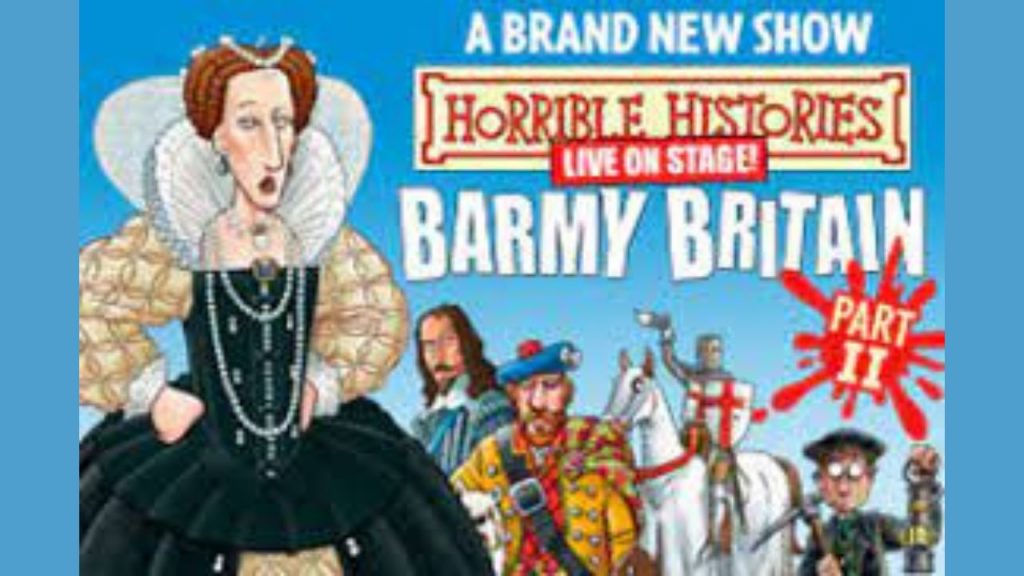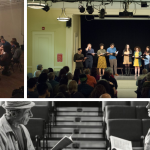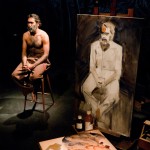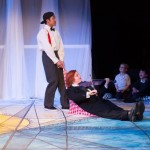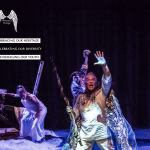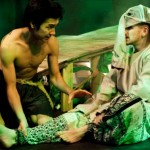How Henry laughed! Horrible Histories: Barmy Britain II at the Garrick Theatre
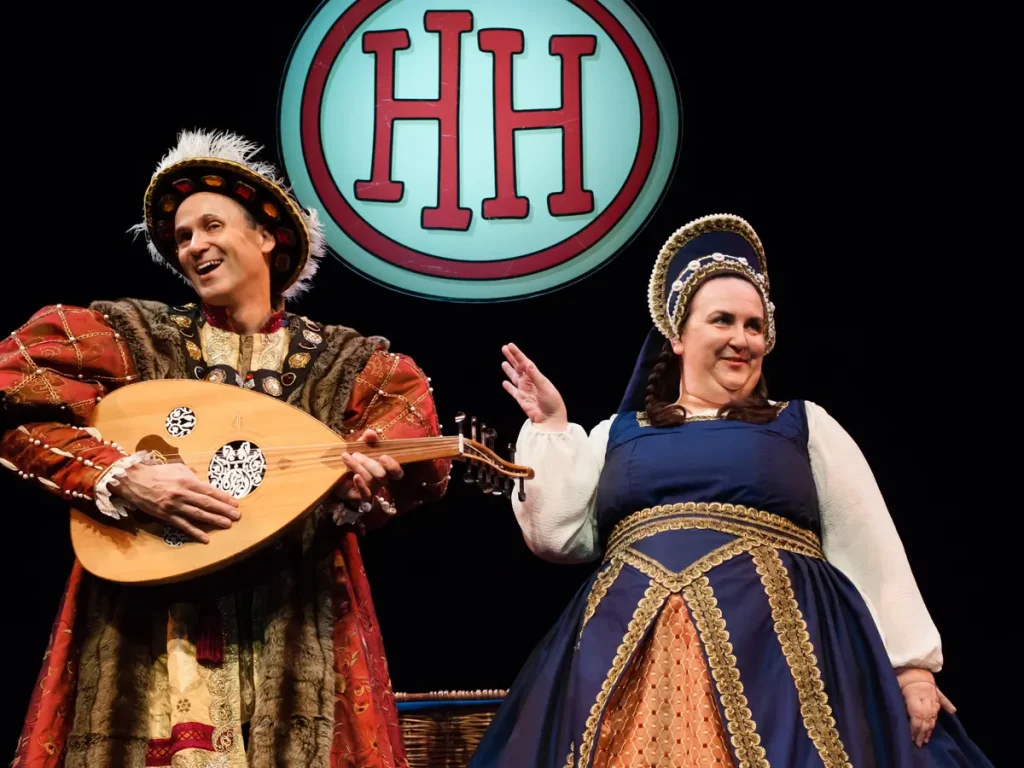
Eight-year-old Henry takes our reviewer on a truth-seeking historical adventure. Birmingham Stage Company’s sensationally-scripted Barmy Britain II proves that satire for kids is in fine shape. At the Garrick Theatre.
The Garrick Theatre was buzzing with the energy of children, eager to see Birmingham Stage Company’s Barmy Britain II, the latest live performance of the popular television and Scholastic reading book phenomenon from Horrible Histories. As the wise child, Henry, aged 8, who accompanied me to the event pointed out, having followed HH since his seventh birthday, he knows that he can depend on its storytellers to give him historical facts which school books just don’t believe children can handle. Such wisdom at such a young age. I ask if he will help me rate the show afterwards. He seems unfazed by the responsibility.
After finding our seats in the stalls and, in response to Henry’s prompts, giving minute by minute announcements on when the show is due to start, we scrutinise the theatre left and right, floor to ceiling. When finally, not a moment too soon for Henry, the safety curtain rises, we view the stage set consisting of two long strips of material upstage ablaze with changing colour from stage lights. In front of the towering panels of light stand two ‘trees’, equidistant right and left of each other, loaded with props and costumes. Between them but further down, centrestage, is a multi-panelled cupboard/ cart-like contraption which becomes a source of wonder throughout the show.
I ask Henry what objects he recognizes on the stage. He points to one of the helmets hanging from the costume ‘tree’, upstage right. As natural as breathing, he then continues to say how the lighted panels, now bathed in a deep blue, look like ‘waterfalls of light’. I’m in awe of the description and ask if I can use it in my review!
Beams of dazzling magenta now frame the first performer, Anthony Spargo, of the duo who will play a host of characters between them. Spargo warms up the audience in traditional comic style, with witticisms and word puns. The laughs come throughout his routine of flinging out body parts of scalp, lungs and heart, to signal how the show will be ‘hair-raising’, ‘breath-taking’ and ‘heart-stopping’. He has Henry’s attention, his knowing smile says to me, ‘Yes! You are being as horrible as I know you can be’.
The contract between Anthony and audience is a done deal and the children cheer on the total irreverent hypothesis that Britain it a barmy place and its history proves that it’s so when suddenly and without warning, arrives the second performer, Lauryn Redding, dressed as a City of-Westminster traffic warden. She demands that our irreverent clown and his unlicensed cart ‘move on’. The wrangling between the duo cleverly introduces how the telling of history is mixed up with the social permission to speak in public and how history is contentious and complex.
The rest of the hour-long show consists of representations of key English historical figures: Queen Boudicca, Richard I (the Lionheart), Queen Bess and Queen Victoria. In between the VIPs, the audience also sees representations of ordinary people such as the barrow wheeler of medieval times who goes from house to house collecting the dead during the Black Death and the ‘Groom of the Stool’ of the Tudor era, responsible for wiping King Henry VIII’s bottom!
Terry Deary and Neal Foster craft a sensational script, which is also directed by Foster. It is punchy and engaging, using many pantomime conventions: cross-dressing, the arrangement of popular songs with adapted lyrics, mock fighting and audience participation. Sound effects, either in the choregraphed action or within the scripted dialogue, never miss a beat and the use of dance styles such as rap, make the routines a wonderful way for the audience to travel between past and present.
Looking at Henry’s smiling face, I know he’s weathered the shocking yarns extremely well. On the other hand, I’m feeling a bit overwhelmed when Henry beckons to tell me he gives the show four stars. Only four stars, I ask? He explains, ‘I didn’t like how the smoke was trying to cover up when they were changing their costumes. I could see through the smoke’. I probe a little. What was so bad about that? Henry sticks to his point about how the smoke, for him, inadequately covers up the actors changing, barely obscured by smoke gushing from the smoke machine.
I have my own reason for giving the show four stars too due to what I feel is the show’s poor ending. For me, it seems to abandon the dramatically interesting critical stance maintained throughout, for a fairly facile conclusion which attempts to say that our current leaders seem worse than the barmy characters presented in performance. What can the audience do with this historical comparison? Are Deary and Foster seriously putting forward that hundreds of years of English leaders who have worked for justice and democracy amount to nothing in human history?
I would have liked, in keeping with its pantomime style, a reprise that underscores the themes established by each of the Horrible Histories during Barmy Britain II. Each historical vignette was perfect in itself, beautifully constructed and presented by two extraordinarily talented young performers. In the end, I applaud their dynamic realisation of the fun of putting on a critical view of the past to better understand and interact with it in the present.
Date reviewed: Saturday 12th October 2013
